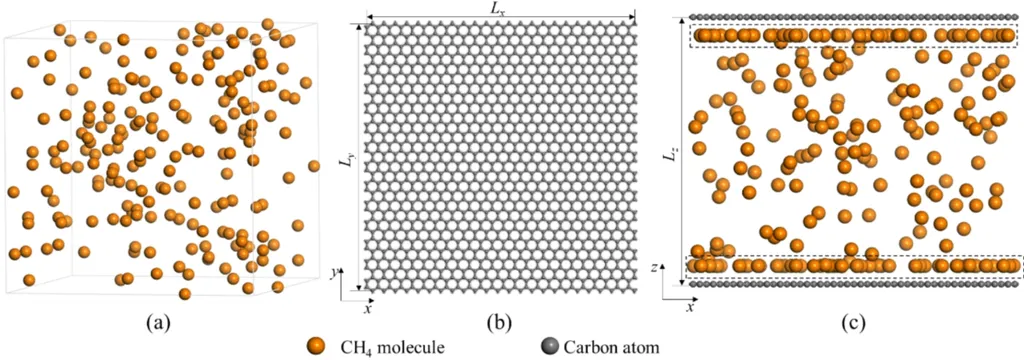In the heart of Pennsylvania, researchers at The Pennsylvania State University are unraveling the complexities of gas transport in nanoporous media, a discovery that could significantly impact the energy sector. Dr. Kawthar A. Babatunde, leading this groundbreaking research, has introduced a novel model that challenges conventional understanding of gas transport in nanoporous materials, such as organic-rich shales and coalbed methane.
The study, published in the journal *Applied Surface Science Advances* (which translates to *Advanced Studies in Surface Science*), focuses on the often-overlooked phenomenon of non-equilibrium adsorption. This occurs when the sorption affinity of the material is high, and mass exchange is slow, leading to a delay in the adsorption process. “Traditionally, we’ve assumed equilibrium conditions, but our findings suggest that this might not always be the case,” Dr. Babatunde explains. “Ignoring non-equilibrium sorption kinetics can lead to significant underestimations of total mass flux.”
The research introduces a species-based model that incorporates non-equilibrium adsorption kinetics for binary gas transport within nanoporous media. This model considers various factors, including surface diffusion, bulk diffusion, viscous flow, and Knudsen diffusion. The extended Langmuir rate equation is used to cover non-equilibrium adsorption, while the generalized Maxwell-Stefan equation addresses surface diffusion.
The implications for the energy sector are substantial. For instance, in the context of CO2 injection into methane-saturated nanoporous media, the study found that the sorbed phase can occupy almost half of the pore volume. Moreover, using equilibrium adsorption models can result in an underestimation of molar flux by up to 8%. “This means that our current models might be giving us an incomplete picture,” Dr. Babatunde notes. “By acknowledging and incorporating non-equilibrium adsorption, we can make more accurate predictions and informed decisions.”
The research also reveals that the sorbed phase adds three times more flux to the total flux when using the equilibrium adsorption model compared with the non-equilibrium adsorption model. This finding underscores the importance of considering non-equilibrium adsorption in mass transport processes.
The developed model provides a thorough framework for investigating gas transport and the sorbed phase’s contribution to total mass transport. As such, it has the potential to shape future developments in the field, particularly in areas like enhanced oil recovery, gas storage, and carbon capture and storage.
Dr. Babatunde’s work serves as a reminder that even in well-established fields, there’s always more to discover. By challenging conventional wisdom and delving deeper into the complexities of gas transport, she and her team are paving the way for more accurate models and improved energy sector practices. As the energy sector continues to evolve, the insights gained from this research could prove invaluable in optimizing processes and maximizing efficiency.

